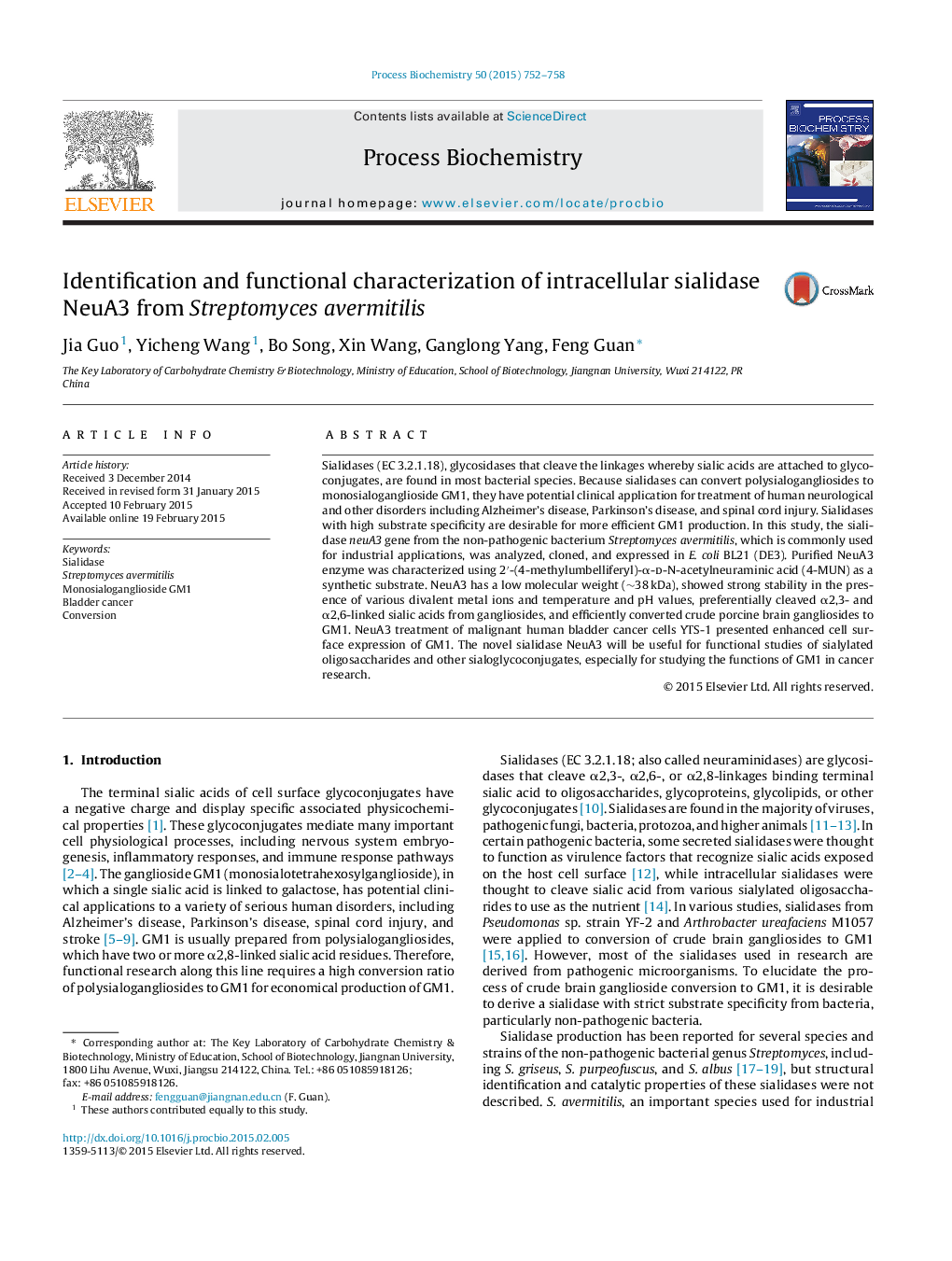| Article ID | Journal | Published Year | Pages | File Type |
|---|---|---|---|---|
| 34332 | Process Biochemistry | 2015 | 7 Pages |
•The protein NeuA3 from Streptomyces avermitilis ATCC31267 was a novel intracellular sialidase.•NeuA3 preferentially cleaved α2,3- and α2,6-linked sialic acids from glycoconjugates.•NeuA3 efficiently converted crude polysialogangliosides from porcine brain to GM1.•NeuA3 treatment of human bladder cancer cells YTS-1 caused enhanced expression of GM1 on cell surface.
Sialidases (EC 3.2.1.18), glycosidases that cleave the linkages whereby sialic acids are attached to glycoconjugates, are found in most bacterial species. Because sialidases can convert polysialogangliosides to monosialoganglioside GM1, they have potential clinical application for treatment of human neurological and other disorders including Alzheimer's disease, Parkinson's disease, and spinal cord injury. Sialidases with high substrate specificity are desirable for more efficient GM1 production. In this study, the sialidase neuA3 gene from the non-pathogenic bacterium Streptomyces avermitilis, which is commonly used for industrial applications, was analyzed, cloned, and expressed in E. coli BL21 (DE3). Purified NeuA3 enzyme was characterized using 2′-(4-methylumbelliferyl)-α-d-N-acetylneuraminic acid (4-MUN) as a synthetic substrate. NeuA3 has a low molecular weight (∼38 kDa), showed strong stability in the presence of various divalent metal ions and temperature and pH values, preferentially cleaved α2,3- and α2,6-linked sialic acids from gangliosides, and efficiently converted crude porcine brain gangliosides to GM1. NeuA3 treatment of malignant human bladder cancer cells YTS-1 presented enhanced cell surface expression of GM1. The novel sialidase NeuA3 will be useful for functional studies of sialylated oligosaccharides and other sialoglycoconjugates, especially for studying the functions of GM1 in cancer research.
Graphical abstractFigure optionsDownload full-size imageDownload as PowerPoint slide
